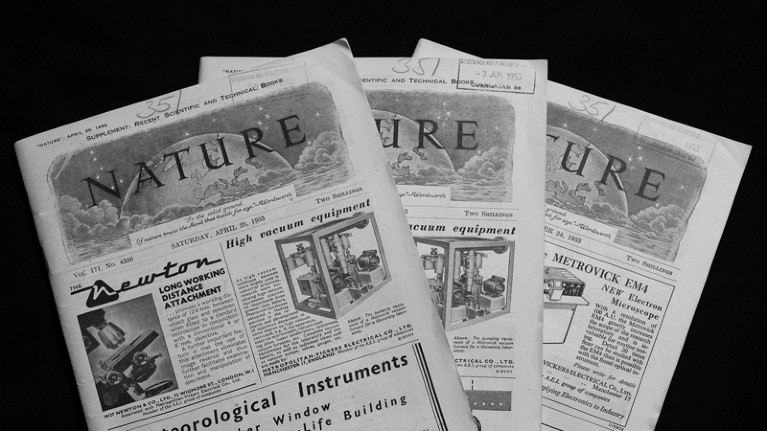
Some myths about publishing in Nature simply refuse to die.Credit: Gado Images/Alamy
Myth 1: Perhaps the longest-lived myth is that publishing a preprint of a paper submitted to this journal will pre-empt its consideration. Not true, as has been said in these columns before. For more than 20 years, we have had a policy of treating preprints as equivalent to conference talks: intra-researcher communication that encourages informal feedback and leads to better papers.
Myth 2: Nature journals do not want senior researchers to involve junior colleagues in the confidential process of peer review. Untrue. We positively encourage such involvement, to help graduate students and postdocs gain experience with due oversight. We ask that they be identified, give them credit and may well go to them directly for advice on subsequent papers.
Myth 3: Referees can veto papers. Only on technical grounds. It has always been the editors who select which papers Nature publishes, even though referees’ assessments of significance are influential. We always heed technical comments, but reserve the right to disagree with a referee’s recommendation as to whether publication is warranted.
Myth 4: The authorship of a paper — including country and institution — influences Nature’s decision on whether to referee or publish it. Untrue. We frequently publish papers from first-time authors, and frequently reject papers by highly reputable researchers on purely editorial grounds of the paper’s significance. We offer the option of double-blind peer review for those authors who want it. We recognize the possibility of unconscious bias.
Myth 5: Nature editors choose papers for anticipated media coverage or citations. Not true. Assessment of significance is what counts. In many areas of research, citations do indeed reflect significance, and we value such achievements. But many papers that we publish neither achieve nor are expected to achieve high numbers of citations. We value them, nevertheless, because we judge them to have intrinsic interest, or because of their potentially substantive impact on society.
Myth 6: Nature editors sometimes reject papers without reading them fully. Untrue.
Myth 7: Authors must prepare submitted manuscripts in the form consistent with our highly Nature-specific format guidelines. Not true. For submission purposes, we care only that the paper conforms roughly to our length stipulations, and that editors and referees can understand the claims and their bases. Figures and their legends do not have to be placed at the end of the text at submission stage. Only moving towards publication does the formatting matter.
Myth 8: Within the Nature journals system, in which authors may be offered a transfer of a rejected paper to another journal, the transferred paper may be underestimated by the receiving editors. Untrue. Editors assess papers on their own terms. Because such transfers are informed by our knowledge of our journals’ criteria, one would expect a substantially lower rate of prompt editorial rejections and a higher rate of refereeing for such transfers than for direct submissions — which is indeed borne out by our statistics. For example, manuscripts transferred within the Nature family were sent to external reviewers in February 2018 twice as frequently as those submitted directly.
Myth 9: Nature editors never consider appeals. Not true.
Our Guide to Authors may not be sufficiently clear on some of these policies, and we are working to improve it. Above all, we hope that this Editorial will help researchers, and correct sometimes widespread misconceptions about Nature’s processes and policies.

 Does your code stand up to scrutiny?
Does your code stand up to scrutiny?
 From proposals to snarks: the messages that scientists sneak into their papers
From proposals to snarks: the messages that scientists sneak into their papers
 Nature journals tighten rules on non-financial conflicts
Nature journals tighten rules on non-financial conflicts


